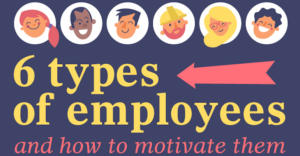Here are just five reasons why this can be an excellent recruitment strategy:
1. Saves time and money
Advertising on job boards or in the press, pre-screening candidates and conducting interviews are all activities with a price tag attached to them. And for an organisation with a high staff turnover, this can be a very costly business indeed. It also consumes valuable HR time and resources which could be better spent focussing on improving morale and productivity among existing staff.
If at first you decide to look internally, the position really only needs to be posted on a noticeboard or on a company intranet site and only a handful of suitable candidates need to be interviewed. There’s no need for extra reference checks, personality profile testing or extensive interviews since these would have been carried out when the staff members initially joined the organisation.
The candidate’s track record with the company speaks for itself. After all past performance gives a much better indication of future performance than any additional interview or psych tests ever can.
An internal recruit is also less likely to demand a huge pay rise, which is another cost saving. A modest increase is often enough, when combined with the prestige of being promoted to a new position with new responsibilities.
2. Reduces training time
The average organisation spends over $1,000 a year on training for each employee; a cost that includes the time spent by managers and experienced co-workers in teaching and demonstrating the requirements of the job.
An internal recruit would need no orientation and far less training, as they are already familiar with the company processes, goals, vision and ‘way of doing things’. They may even be familiar with and have performed some of the tasks in their previous role (i.e. an assistant manager being promoted to manager).
3. Improves productivity
Organisations with a policy of promoting from within tend to have more highly motivated staff. If a person feels they will be rewarded for dedication and hard work, they are far more likely to take ownership of their position and give it their best efforts.
Internal recruits are also more likely to have previous knowledge of company policies and procedures. This means they will pick up the requirements of the new job more easily than someone brought in from the outside and thus will be more productive from the outset.
4. Improves morale
Rewarding talent and promoting from within engenders a culture of loyalty and stability. Staff absenteeism and retention rates are also likely to be better, which provides a greater return on the time and resources invested in each employee.
Staff are more likely to stay with the organisation if they are encouraged to improve their skills through further training and can see that there is a definite career path for them.
People are always looking to better themselves, so if you offer them the opportunity to do so within the organisation, they are less likely to look elsewhere and you avoid a costly ‘brain drain’ on your manpower resources.
5. Facilitates succession planning
As well as filling existing positions, internal opportunities can also be created for employees who demonstrate potential. By grooming talented employees to move into higher positions as they become available, the organisation can benefit from the skills and talent in its workforce.
Succession planning aims to ensure that the right people are in the right position at the right time to achieve the organisation’s business goals.
Internal recruitment is only successful if all employees have equal access to information about available positions and are all given the opportunity to apply. If a strict internal recruitment procedure is not adhered to, there may be resentment between employees and perceptions of favouritism.
Of course there are those who might argue that internal recruitment creates a resistance to change amongst employees and perpetuates old ways of doing things. This is not in the interests of an organisation that needs to be able to respond rapidly to a changing business environment.
Promoting from within has definite advantages, but to avoid this possibility of becoming ‘stale’ though lack of new blood, an organisation should ideally hire both internally and externally, depending on the kind of position and whether there are sufficient internal candidates to fill it.
Every new position filled leaves an old position vacant, so an organisation will be required to hire externally anyway from time to time. This creates the opportunity to introduce new people into entry-level positions, injecting new ideas and attitudes into the organisational gene pool.

















